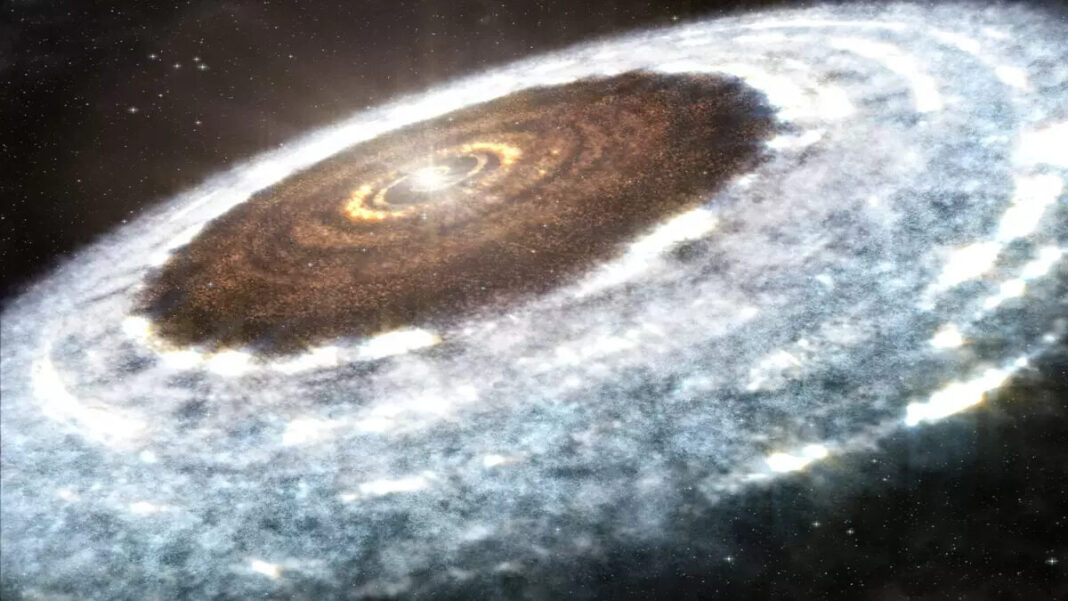CHILE: Astronomers using the Atacama Large Millimeter/Submillimeter Array (ALMA) have discovered gaseous water in the disc around the star V883 Orionis.
This water contains a chemical signature that explains the journey of water from star-forming gas clouds to planets, supporting the idea that the water on Earth is older than the Sun.
When clouds of dust and gas, or nebulae, collapse in on themselves, a star forms at their center. As this happens, material from the cloud forms a disc around the “protostar.”
Eventually, over millions of years, the matter in the disk clumps together to form comets, asteroids, and planets. The research team, part of the European Southern Observatory, measured the chemical signatures of the water around V883 Orionis using ALMA.
The researchers studied a heavier version of water where one of the hydrogen atoms is replaced with deuterium, a heavy isotope of hydrogen.
Normal water and this kind of heavy water exist under different conditions, which means that the ratio between the two can be used to trace when and where the water was formed.
The water in the V883 Orionis disc has a remarkably similar chemical structure to comets in our own solar system.
This supports the concept that comets and Earth have inherited relatively unchanged amounts of water that formed in planetary systems billions of years ago, before the Sun, in interstellar space.
Observing the water around V883 Orionis was challenging because most of the water in planet-forming disks is frozen, which means it is hidden from view.
However, a recent study showed that the V883 Orionis disc was unusually hot due to a dramatic outburst of energy from the star. The water is heated by this energy to the point where it turns from ice to gas instead.
Gaseous water, as opposed to frozen water, can be found because of the radiation that its molecules spin and vibrate at. When water is frozen, the motion of molecules is much more constrained, making it more difficult to detect.
An earlier study had suggested that more than half the water on our planet is older than the Sun, but this new study suggests that all the water on the planet is older than the Sun.
The discovery of gaseous water around V883 Orionis is the missing link that connects young stars and comets.
It confirms that the water in planetary systems formed billions of years ago, before the Sun, in interstellar space and has been inherited by both comets and Earth, relatively unchanged.
Also Read: Study Predicts Alarming Increase in Ocean Plastic Pollution by 2040



